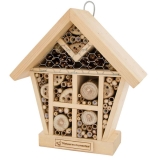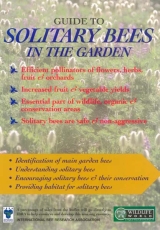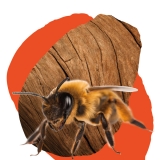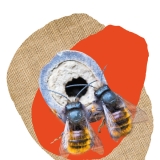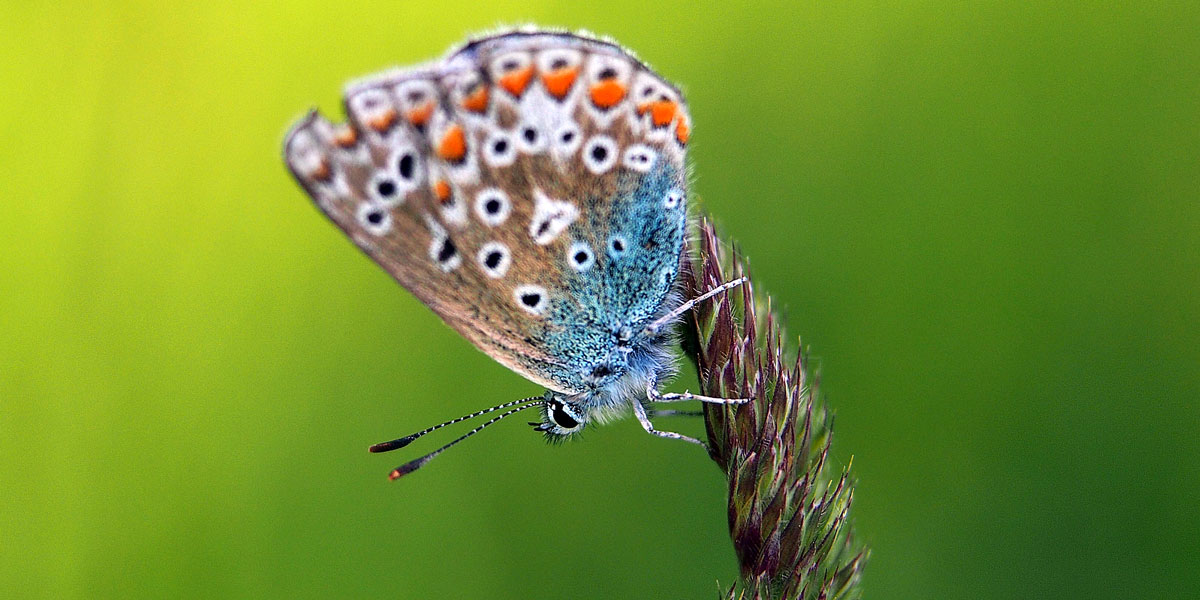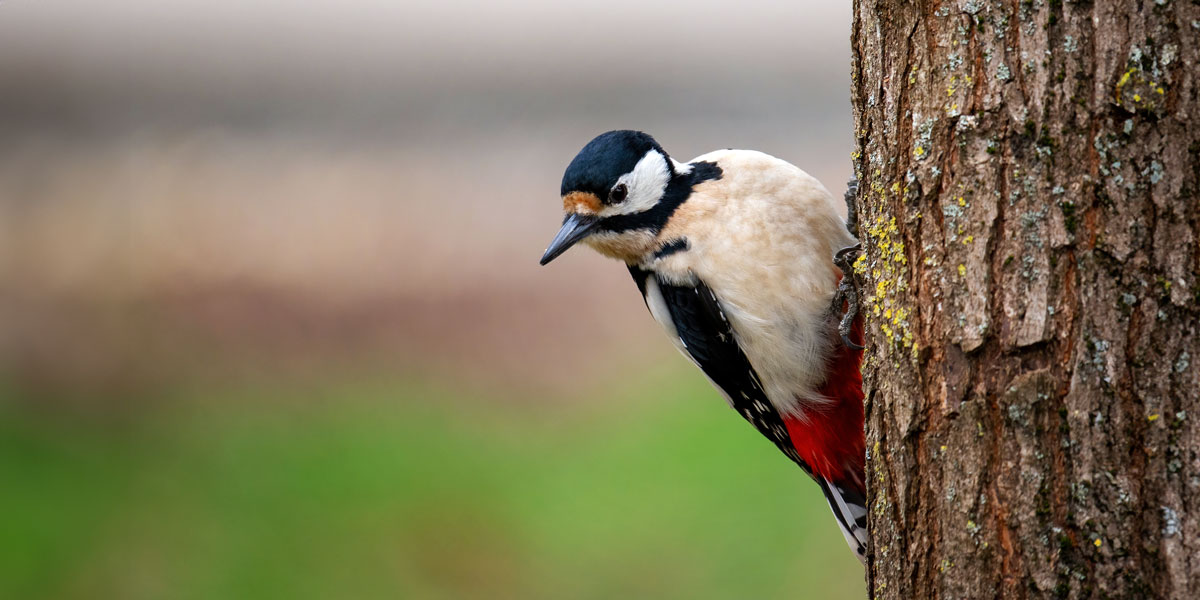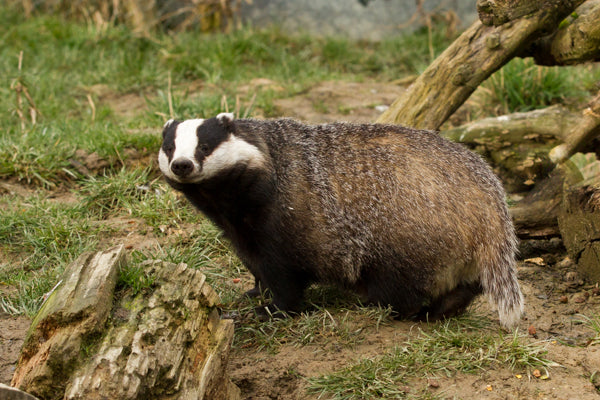Explore Our Garden Wildlife Blog
Browse or search by Category or Keyword below, alternatively click on any Tag to see related articles.
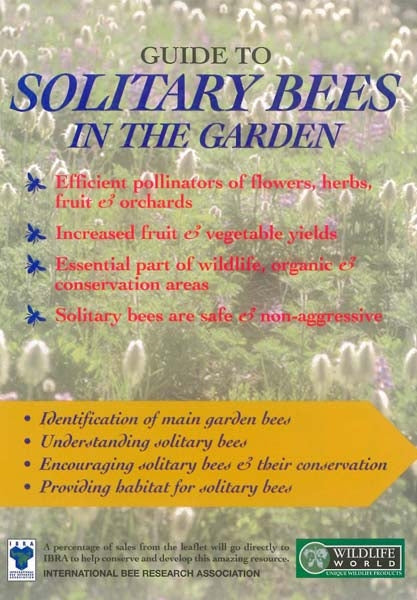

Solitary Bees, Mason Bees & Leafcutter Bees UK: A Guide
By Ark Wildlife
7th September 2022
Last Updated: 8th March 2024
Solitary bees identification UK
Two of our most common garden solitary bees are the red mason bee (Osmia rufa) which is a small bee covered in dense ginger hair (the males have a white tuft of hair on the face) and the leafcutter bee (Megachile centuncularis) which looks like a honey bee with an orange abdomen. Solitary bees do not produce honey or have queens to defend and therefore are very peaceful creatures. While some of the females do possess stings (the males do not) they will not use them unless trapped or threatened.
Solitary bees are rather difficult to describe, as there are many species of different sizes and appearance that visit our gardens. The main thing that separates them from other bees is their lifestyle. Solitary bees as the name suggests do not live in colonies like the bumble and honey bees that they resemble.
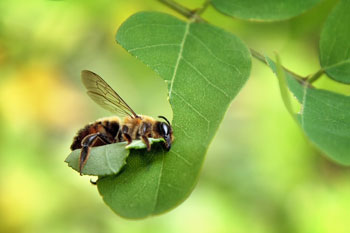

What are solitary bees?
Solitary bees don’t live in colonies like bumblebees or honeybees. These bees also don’t make honey and don’t serve a queen, meaning that they aren’t aggressive. Instead, a female solitary bee works alone to build her own nest. Male solitary bees don’t play a role in the nest construction, with their role being to mate with the female.
When do Solitary Bees mate?
From the first mild days of spring male solitary bees become active feeding on early nectar and buzzing restlessly around potential nesting sites, waiting for the females to arrive. Sites may include holes in walls, hollow plant stems or holes in the ground depending on the species and this activity can continue throughout the summer. Mating takes place either perched on leaves or on the ground and can involve a number of bees. A single mating will fertilise all the females eggs and once complete the male has no further involvement. The female will then select a suitable nesting site and build individual cells, collecting and placing food in the form of bee bread in the cell, she will then lay a single egg and seal the cell. This process is repeated until she is exhausted of eggs which may number up to 40 per bee. She takes no further part in raising her brood. The young larvae will then develop and overwinter within the cells to emerge as the next breeding generation the following spring.
How you can help solitary bees?
Solitary bees can be found in most gardens, parks, heathland, meadows and urban areas. They are active from March (on warmer days) right through to the end of summer, although the peak of activity and breeding takes place in May and June. Some offspring may hatch during the summer they are laid and start a second cycle in the same year. Although independent by nature many solitary bees seek out similar nesting sites and often broods of different species can be found alongside one another in the soil, wall crevices and wood, but with our penchant for paving stones and decorative gravel removing these potential sites, artificial sites such as a bee home or bee house are a viable if not essential option to attract these necessary garden visitors. Bees seek out nesting sites in full sun, usually south facing where there is plenty of access to nectar producing plants, flowers and trees.
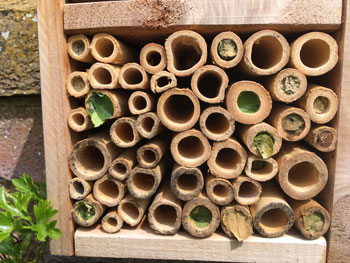

Role of Solitary Bees in the garden
All bees are essential pollinators and it is said our shops would have less than a third of the choice of fresh produce currently available if the all the bees died out! From the flowers in the borders to many vegetables and all our fruit trees, all bees solitary and social, are critical to our survival and deserve a high priority of care in our efforts to promote a vibrant and ecologically friendly wildlife environment. There are currently about 20,000 species of bees in the world of which approximately 250 reside in the UK. However, a number of species have already become extinct, with others in serious danger. Recent years have been witness to dramatic declines in bee populations and whilst the causes are still being studied, assistance from us by providing a bee house or bee tubes – if you will – can only help to stem this decline.
Types of solitary bees
There are over 200 different species of solitary bees in the UK. In fact, 90% of bees found in Great Britain are solitary. Some common types of solitary bees include:
- Ashy mining bee
- Box-headed blood bee
- Ivy mining bee
- Long-horned bee
- Pantaloon bee
- Red mason bee
- Wool carder bee
- Hairy-footed flower bee
- Patchwork leafcutter bee
How to Attract Solitary Bees to your garden
Solitary bees are readily attracted to gardens that are packed with nectar giving flowers and plants. They breed in holes in the soil, as well as cavities in walls and wood, however, should natural nesting sites prove hard to find, we can assist by providing bee boxes and bee houses which can be placed almost anywhere in our gardens although plenty of sunshine is a definite preference. Alternatively, red mason bee tubes, tied together or secured in a wooden frame provide exactly the sort of cavities that these beneficial insects are attracted to. Plenty of living organic matter and pesticide reduced/free gardens provide the best prospects for success. Considerate planting of nectar giving flowers, especially in early spring and late summer, along with plenty of nesting sites on a sunny wall and a bare patch of soil in a sunny location all improve the prospects of successfully attracting and retaining your own groups of solitary pollinating bees. It is also worth noting that offspring will often remain close to and even re-use the nest sites from which they came. Providing a bee home makes it easy to increase local populations with just a few simple steps.
Mason Bee UK Identification
Like their name suggests, you will usually see mason bees buzzing around a brick wall, where they often nest in the cavities. The red mason bee is a likely visitor to the bee house in your garden and you can purchase mason bee houses, specially designed for this type of species. They are identified by:
✔ An orange abdomen
✔ A brown thorax
✔ A boxy black head
✔ A fluffy body (females)
When identifying mason bees, it’s helpful to refer to a photo for guidance, because they can be easily confused with mining bees. In comparison, mason bees have powerful jaws and square-shaped heads.
What is a mason bee?
Mason bee is the name given to a common species of bees from the Megachilidae family. Their name comes from their preference to nest in cavities between brickwork. These bees can be metallic blue, black, green or rusty red in colour.
Where do mason bees nest?
Mason bees can be found nesting in holes or cavities, including in window frames, bricks, plant stems and cliff faces. They particularly like to nest in locations that are sunny and south-facing.
Leafcutter Bee Identification
You are most likely to see the Willughby’s leafcutter bee or the patchwork leafcutter bee in your bee log.
Willoughby’s leafcutter bee
The female bees have gold, red and black coats and are less fluffy than the males, who look like they are wearing winter mittens!
Patchwork leafcutter bee
The females are identified by their bright orange pollen brush and are about the same size as a honey bee.
What is a leafcutter bee?
Leafcutter bees are another type of solitary bee that use leaf sections to make nests. There are seven different types of leaf-cutting bees in the UK and they’re all great pollinators.
The female bee uses her jaws to cut sections of garden leaves which she takes back to her nest and ‘glues’ together with saliva to build cells for her larvae to live.
If you notice small segments cut away from leaves, particularly roses, then you may well have a leafcutter bee nearby!
External sources/references






